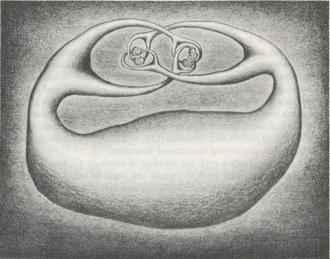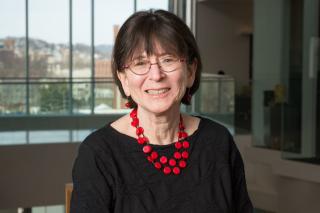Lenore Blum '63 has been granted a unique honor by the Association for Women in Mathematics (AWM) — she is now featured on a playing card for her "contributions to research mathematics; mathematics in business, industry, and government; to establishing, cultivating, and sustaining mathematical communities; and to increasing the participation of women and underrepresented groups." The deck will feature important 64 female mathematicians.
We recently spoke to Blum about becoming an "accidental activist," the AWM, and her many accomplishments in the field.
You co-founded the Association for Women in Mathematics (AWM). What led up to that point?
When I received my PhD in 1968, I had a fellowship to go anywhere in the country, and the University of California at Berkeley was the obvious choice. Not only did it have one of the best mathematics departments in the world, but it was also one of the most liberal and politically active campuses in the US. Most importantly, the mathematician I most admired, Julia Robinson, was there. Julia’s research had used logic and model theory to solve problems in mathematics, similar to the focus of my doctoral thesis.
I was shocked that this famous mathematician had never held a regular faculty position at the university. The proverbial Aha moment! In fact, there were no women on the math faculty at Berkeley, nor at any of the other top math departments in the country. It soon became clear what this meant for women in mathematics — I had blinders on. Even when my first PhD advisor at MIT took a position at Princeton and I couldn’t follow him (since Princeton didn’t allow women into its Math PhD program until 1968), I took that in stride. While this had allowed me to keep charging ahead, it also left me ill-prepared to deal with the reality.
Some Berkeley math faculty were running a colloquium series on math and social responsibility and asked if I would lead a session on “Women and Math.” I knew very little about women and math, so I gathered others who knew about women mathematicians in history, studies on personality types, and the status of academic women on the Berkeley campus. Perhaps because this was an all-female panel, we attracted a huge crowd. After that, I was known as the “expert” on women in mathematics, at least on the west coast. That’s when I started meeting with women grad students at Berkeley, and we formed what became the west coast chapter of the AWM. It was my first foray as an “accidental activist.”
You started a math and computer science program at Mills College — the first for a women’s college. What was the reaction at the time?
When I started teaching at Mills, I devised a course called “Demystifying Mathematics,” which I hoped would get students excited about the field. In those days, high school students only had to take two years of math to get an academic high school degree. Most girls were advised by their parents and counselors to opt-out of math after two years because “why spoil a good GPA with a low mark in math?”

This was probably one of the biggest impediments for women not going into math, much less graduate school or becoming faculty members. On the other hand, most boys were advised to stay in no matter what because they would certainly need math skills in engineering and other male-dominated fields. I wanted this course to focus on some of the most fascinating areas of mathematics, so I put up posters all around campus with a picture of an Alexander Horned Sphere.
Mills allowed me to teach this course as long as I also taught a required course in “College Algebra,” which was basically a remedial course in high school algebra. The material was just going over dull stuff that was not leading anywhere. Then, my epiphany: there were five times as many students in “College Algebra” than in my “Demystifying Mathematics” class. I had a captive audience who I could get ready to take more advanced math. Calculus and statistics were important for economics and psychology, in addition to the traditional scientific fields. I threw away the text and syllabus and started teaching the thinking process that could move students, no matter their background, quickly into calculus and beyond.
There were a few basic computing classes at Mills, and I thought it would be great to combine that with a new math curriculum for a joint math/computer science major. I circulated a “white paper” with my ideas and a curriculum spelled out. There was a feeling in some parts of campus that I was trying to turn a liberal arts college into a technical school — but some members of the board had seen my plan and were enthusiastic about the direction I was envisioning. The president of Mills asked me to start a new Math/CS Department and appointed me the head.
Do you have advice on how students can best support each other?
I think it is hard for students to support each other if there is no institutional support structure to help them do so. I founded the Women@SCS program at Carnegie Mellon University, which provided both mentoring and outreach opportunities for women in computer science and increased female enrollment in the program. This program has been successful because it has had faculty leadership and institutional support, enabling students to carry out their great ideas with advocacy and backing. These ideas and resulting programs include community building, networking, mentors, leadership and professional opportunities, and outreach, providing the many important experiences critical for success.
What would you say to women interested in studying math/computer science?
Go for it. There are so many exciting things to do, but you can’t do it alone. Look for mentors, collaborators, and seek out opportunities to be with others with similar interests. There are all sorts of opportunities for summer undergraduate research programs, and I expect there are programs for high school students, as well. Join organizations like the AWM, to be inspired by role models (current and historical) and to network, connect with mentors, and get advice.

